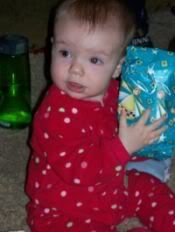A couple thoughts from my perspective...-SWS wrote:Resmed ASV Patent Description wrote:In some subjects, the period of unstable breathing immediately after sleep onset could be eliminated by asking the subject to remain awake for 20 minutes after applying the mask and before going to sleeps in order to minimize overbreathing immediately prior to sleep onset.
In their testing, was this one night only? Or repetitive nights, same person/same machine/same mask, like you would have at home? We know there is some adjustment process going during first 15 minutes or so after LC is run, which isn't noticeable on subsequent uses; and most people would not run LC nightly at home, though they may in a lab/study situation.
I pulled out my box of masks (they long outgrew the top dresser drawer ), and there is a noticeable difference in how it feels during the learn patient phase (LPP) with any mask that is not listed as compatible. As many times as I've tried, I cannot detect a difference in LPP and normal functioning with Vista, Activa, UMFF, UMnasal, but its safe to assume there is something happening even if its not redially apparent. Nothing has come close to how LLP felt when I tried it with the Swift, and I probably wouldn't have noticed the slight difference with non-compatible mask that are able to pass LC on their own if I hadn't experienced the Swift's wild LLP. When I restart with the same mask without running LC, the LPP period is much less; I even noted that with the Swift. So is their recommendation relevant to real world use or lab use? Or a little of both- needing to stay awake during LLP if you've run LC?
Thinking real world application and not having the study in front of me to critique, another thought is if the 20 minute pre-sleep application could have a calming affect & aid in putting the person in a better frame of mind for sleeping then if they didn't have a 20 minute 'meditation' period? (how active can you be on a 6 foot leash attached to the machine and a mask on your face?) What's about the worst thing you can do if you notice you're having onset centrals?-panic, because then you'll be fully awake and have to transition again and again. Could a 20 minute 'meditation' help lower severity of sleep onset/stage I transition events on its own? Was a control run using a non-ASV BiPAP or even CPAP for 20 minutes prior to sleep to see if there were any changes? Even 20 minutes on a non-ASV machine then switching to ASV for sleeping?
Another thought is how does correction of sleep overall play in & repayment of 'sleep debt'?. I know in the past, I had noticeable periodic breathing (PB) as I would get close to falling asleep, which we know continued throughout the night. Remember how I use to say it wasn't worth it to fall asleep without my BiPAP ST because non-treatment sleep basically equaled negative sleep time, leaving me feeling worse then if I hadn't slept at all? Now, even without my Adapt, I can take a short nap or even sleep through the night (not on purpose...its just I fall asleep much faster then I was use to), with out severe PB. When I fall asleep now, I stay asleep instead of waking up constantly; its even easier to fall back to sleep on those rare occasions I do wake up during the night now. I may have some very mild PB now, or it may just be normal variations in breathing with transition into sleep- I don't have a good concept of what 'normal' is since I never really experienced it before. The only time I notice a significant increase in pre-sleep PB recently is when I'm extremely tired & exhausted or related to my allergies (when I was off my allergy meds for testing or if I had a significant allergic reaction close to bed time). Putting aside the allergy issues, I think it is significant that use of the Adapt has affected my breathing & sleep even when I'm not using it. They were not kidding when they gave it the marketing tag line of "Simply Amazing" in my experience.











